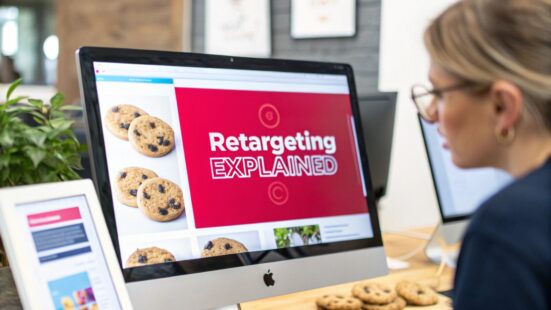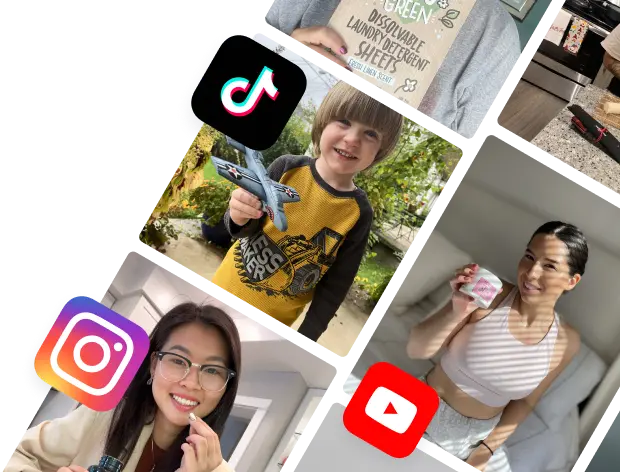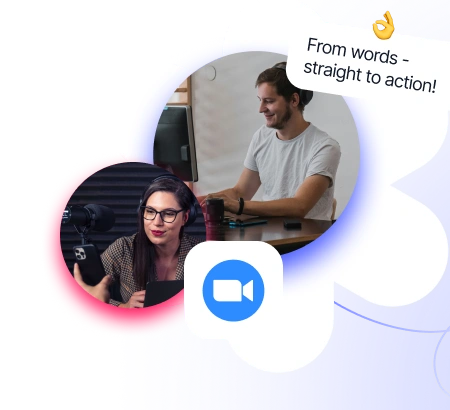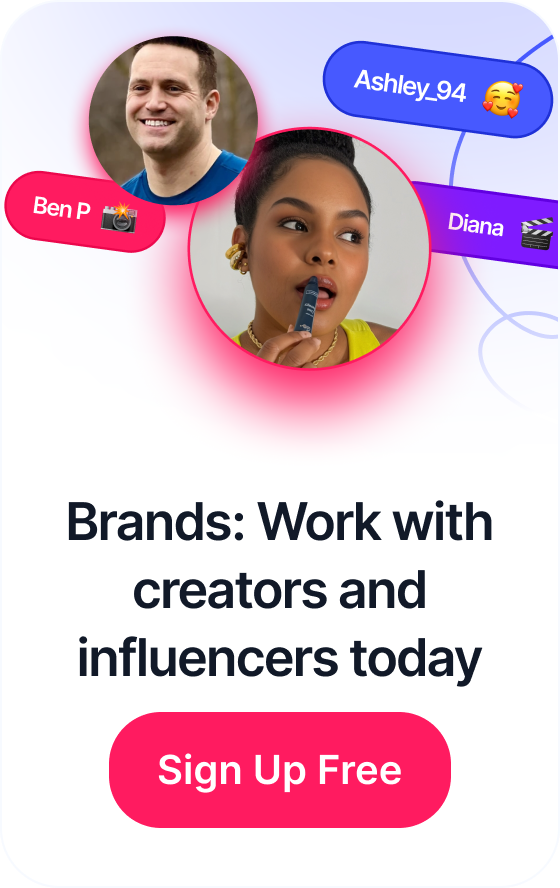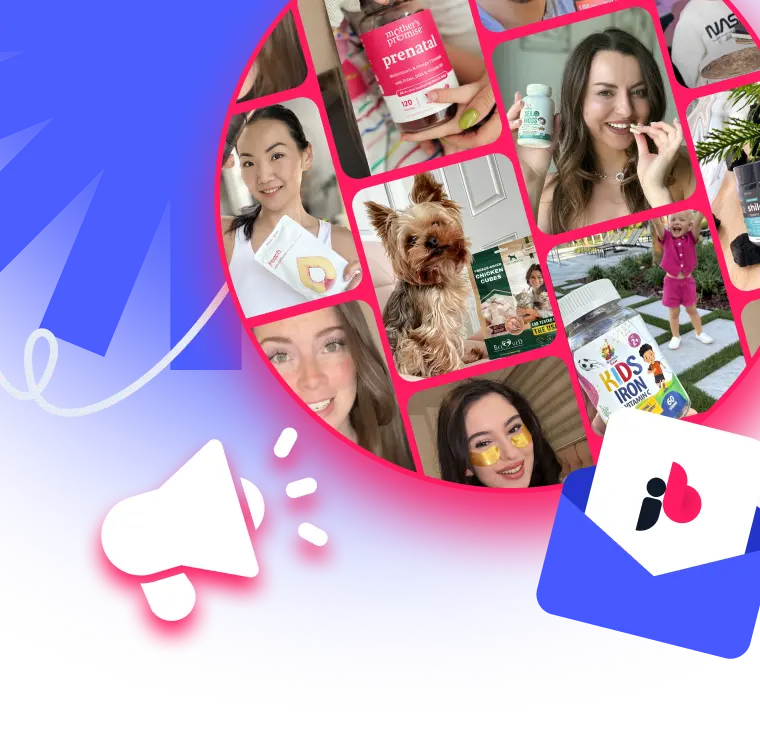 Build Your Ambassador Program for Brands
Build Your Ambassador Program for Brands
Retargeting is basically digital advertising's way of giving you a second chance to connect. It’s a strategy that lets you show ads specifically to people who've already stopped by your website or interacted with your brand in some way. Think of it as a friendly follow-up with potential customers who showed interest but, for whatever reason, didn't quite make it to the finish line on their first visit.
Table of Contents
The Second Chance Conversation in Advertising

Have you ever looked at a pair of shoes online, clicked away, and then suddenly started seeing ads for those exact shoes on your social media feed? That’s retargeting in action. It’s an incredibly effective way to re-engage people who are already familiar with what you offer.
The reality is, only about 2% of website visitors convert the first time they land on a site. Retargeting is all about bringing back the other 98%.
This whole approach works so well because you're targeting a "warm" audience—these aren't strangers. They've already raised their hand and shown some level of intent. Instead of shouting your message into a cold, indifferent crowd, you’re simply continuing a conversation you already started. That familiarity makes your ads feel more relevant and a lot less intrusive.
Why This Strategy Is So Effective
At its core, the power of retargeting comes down to precision and efficiency. You're focusing your ad spend on people who have already demonstrated interest, which naturally leads to better results and a much higher return on your investment.
Here are a few of the biggest wins:
- Keeps You Top-of-Mind: Gentle, repeated reminders ensure your brand is the first one people think of when they're finally ready to buy.
- Boosts Conversion Rates: This audience is already qualified. That means they are far more likely to convert than someone who has never even heard of your brand.
- Makes Ads Hyper-Relevant: You can show ads for the specific products a user looked at, creating a personalized experience that really works.
To help you get a clearer picture, here’s a quick breakdown of the core ideas behind retargeting.
Retargeting at a Glance: Key Concepts
This table summarizes the fundamental parts of retargeting and why they are so important for any advertiser looking to get better results.
| Concept | What It Means | Why It's Important |
|---|---|---|
| Warm Audience | People who have already visited your site or engaged with your brand. | They are more receptive to your ads and more likely to convert than a cold audience. |
| Tracking Pixel | A small snippet of code on your website that anonymously "tags" visitors. | This is the technology that lets you identify and serve ads to your warm audience across the web. |
| Ad Frequency | The number of times a single user sees your ad within a specific period. | Finding the right balance prevents ad fatigue while keeping your brand memorable. |
| Conversion | When a user takes a desired action, like making a purchase or signing up. | This is the ultimate goal of retargeting—turning initial interest into a measurable result. |
Ultimately, these elements work together to make your advertising more personal and effective.
Retargeting is a cornerstone of modern performance marketing, which is all about driving measurable actions. If you want to dive deeper into this results-first approach, check out our complete guide on what is performance marketing. It’s a powerful strategy that ensures your marketing budget is spent wisely, nurturing warm leads until they become loyal customers.
How Retargeting Technology Actually Works
Ever wonder how an ad for a product you just viewed follows you around the internet? It’s not magic, but it is a clever bit of technology. The whole system runs on a tiny piece of code, usually called a pixel or a tag, that you get from ad platforms like Google or Meta.
You simply add this small code snippet to your website. Think of it as an invisible welcome mat. When someone steps on it (visits your site), the pixel places a small, anonymous text file—known as a cookie—into their web browser.
This cookie doesn't hold any personal info; it’s just a unique ID, like a digital ticket stub. This simple action is the first step in creating a trail that lets your ad platform spot that user again as they browse other sites.
From Website Visitor to Ad Viewer
The real action kicks off after the visitor leaves your website. As they navigate to other sites, scroll through social media, or use apps within your chosen ad network, the system recognizes the unique cookie in their browser.
This recognition is the trigger. It tells the ad platform, "Hey, this is one of the people who visited the site." In response, the system serves up one of your ads. For instance, if someone looked at a specific pair of blue running shoes on your site, you can show them an ad featuring those exact shoes moments later.
This infographic breaks down the simple three-step journey.
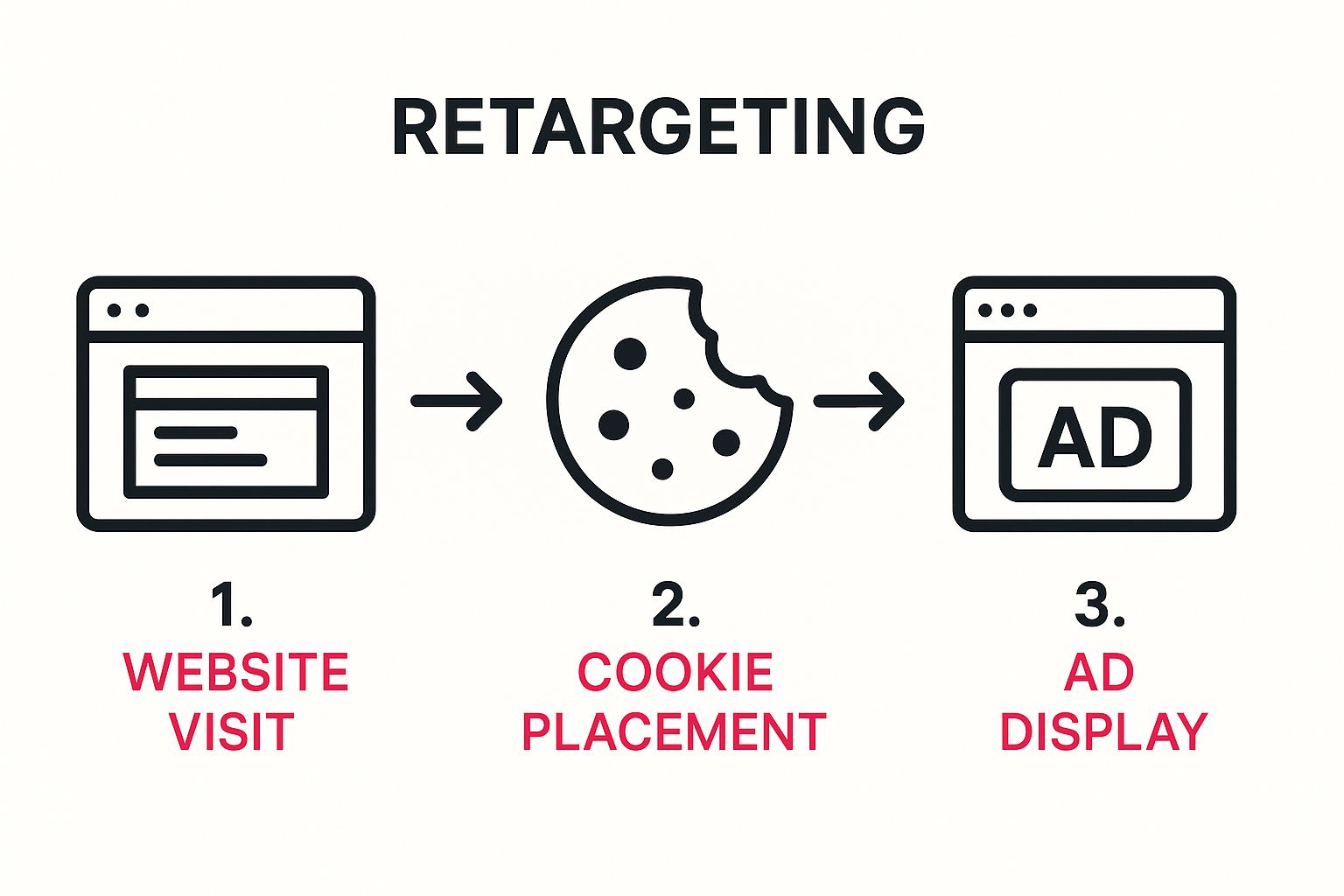
As you can see, a single website visit sets off a sequence that leads right back to a follow-up ad, keeping your brand top-of-mind.
Key Takeaway: Retargeting isn't about personally tracking people. It's about anonymously recognizing a browser that showed interest in your brand, giving you a second chance to connect with them through relevant ads.
This is what makes retargeting so powerful—it helps you continue the conversation with people who are already familiar with you. As technology evolves, you can even use AI to launch ads, integrating more sophisticated targeting into the process. But the core idea is the same: use technology to reconnect with a warm audience and make every ad dollar work harder.
The True Business Impact of Retargeting

So, beyond the technical stuff, what can retargeting actually do for your bottom line? The answer is simple: it wrings every last drop of value out of the traffic you’ve already worked so hard to get.
Think about it. Instead of constantly shelling out cash to attract brand-new, ice-cold traffic, retargeting lets you focus your ad spend on a warm audience that’s already kicked the tires. They know who you are. This simple shift in focus almost always leads to a much healthier return on ad spend (ROAS).
Boosting Conversions and Brand Recall
The data tells a pretty clear story here. Retargeting ads have been shown to boost conversion rates by up to 150%. Why? Because you’re re-engaging people who have already raised their hand and shown interest. It’s also a killer strategy for tackling shopping cart abandonment, cutting it down by as much as 26% with a simple, timely reminder.
That consistent, gentle nudge does wonders for brand awareness, too. The main perks are pretty straightforward:
- Enhanced Brand Recall: When someone sees your ads again, your brand is top-of-mind when they’re finally ready to pull the trigger and buy.
- Increased Customer Lifetime Value: By bringing past visitors back into the fold, you get more chances to turn a one-time buyer into a loyal, repeat customer.
By focusing on warm leads, retargeting ensures your message lands with an audience that is primed to convert, making it one of the most cost-effective tools in a marketer's arsenal.
Of course, knowing which ads are actually driving those sales is crucial for making this strategy work. You can get a much clearer picture by exploring our guide on what is attribution modeling, which helps you give credit where credit is due.
Beyond just driving immediate sales, a smart retargeting strategy fits right into your bigger marketing picture. For brands heavily invested in video, for instance, ad spend can be synced up with content monetization efforts, much like the different strategies for monetizing YouTube Shorts through ad revenue.
Choosing Your Retargeting Method
Not all retargeting is created equal. To get the best results, you need to match your method to your goals. Are you trying to bring brand new visitors back to your site, or are you trying to re-engage people you already have a relationship with?
The answer to that question will point you toward one of two main approaches: pixel-based or list-based retargeting. Think of it like using a wide net versus a fishing spear—one is for casting a broad net to catch anonymous visitors, while the other is for targeting specific, known individuals with absolute precision.
Pixel-Based Retargeting: The Digital Breadcrumb Trail
This is the type of retargeting you probably run into every single day. Pixel-based retargeting works by dropping a small piece of code (often called a "pixel" or a "cookie") into a user's browser when they land on your website. This is the perfect tool for chasing down potential customers who are still just browsing.
Because it’s tied directly to what people do on your site in real-time, it’s incredibly dynamic. Someone checks out a specific pair of shoes? Boom. Your ads can start showing them that exact pair of shoes all over the internet moments later. It’s an automated and massively scalable way to stay in front of anonymous visitors who’ve shown interest but haven't given you their email yet.
Key Insight: Pixel-based retargeting is your heavy hitter for top-of-funnel engagement. It captures a wide audience based on their on-site actions, making it a powerhouse for brand awareness and turning curious visitors into first-time customers.
List-Based Retargeting: A More Personal Touch
List-based retargeting, on the other hand, gets a lot more personal. Instead of chasing anonymous browser cookies, this method uses a list of contacts you already have, like your email newsletter subscribers or your database of past customers.
You take this list and securely upload it to an ad platform like Facebook or Google. The platform then plays matchmaker, finding its users who are on your list and letting you serve ads directly to them. This is wildly effective for things like re-engaging customers who haven't bought in a while or upselling current clients on a new service.
So, which one should you use? It boils down to a simple choice:
- Go with Pixel-Based when: You want to target anonymous website visitors and nudge them toward that first conversion.
- Go with List-Based when: You need to nurture existing leads or reconnect with past customers using highly specific messaging.
Now, let's break down the key differences side-by-side to make the choice even clearer.
Pixel-Based vs List-Based Retargeting
This table gives a quick overview to help you decide which approach is the right fit for your next campaign.
| Feature | Pixel-Based Retargeting | List-Based Retargeting |
|---|---|---|
| Target Audience | Anonymous website visitors | Known contacts (e.g., customers, subscribers) |
| Setup Mechanism | A tracking pixel/cookie placed on your site | Uploading a contact list (emails, phone numbers) |
| Primary Goal | Top-of-funnel: brand awareness, lead gen | Mid/bottom-of-funnel: nurturing, upselling, re-engagement |
| Ad Personalization | Based on on-site behavior (pages visited) | Based on customer data (purchase history, lifecycle stage) |
| Audience Size | Can be large and scales with site traffic | Limited to the size of your contact list |
| Best For | E-commerce, SaaS, high-traffic websites | B2B, subscription models, businesses with CRM data |
Ultimately, you don't have to choose just one. The most sophisticated marketing strategies often blend both methods. They'll use pixel-based ads to bring new people into the fold and then switch to list-based campaigns to build a lasting relationship with them once they become a customer.
Building a Winning Retargeting Strategy

Knowing what retargeting is and actually launching a campaign that works are two different things. A successful campaign hinges on one critical element, and it's not your budget or your ad design—it’s audience segmentation.
Throwing a single, one-size-fits-all ad at every person who ever visited your website is a surefire way to burn through your budget and annoy potential customers. You want your ad to feel like a helpful, timely reminder, not just another piece of digital noise.
To pull this off, you have to group your website visitors into different buckets based on what they actually did on your site. This is how you tailor your ads to match their true level of interest and intent.
How to Segment Your Audience
Instead of just lumping everyone who visited in the last 30 days into one giant audience, you need to get granular. By creating separate lists for different user actions, you can personalize your ad creative and offers for maximum impact.
Here are a few of the most important segments you should set up right away:
- All Visitors (Last 7 Days): This is your go-to for general brand recall. A simple ad reminding them of who you are and what you do is perfect.
- Product Page Viewers: These people were looking at something specific. Show them an ad featuring the exact product or category they viewed. It's a direct and powerful prompt.
- Cart Abandoners: This is your most valuable, highest-intent group. They were this close to buying. Hit them with a compelling ad that reminds them what they left behind, maybe with a small discount or a free shipping offer to get them across the finish line.
- Past Buyers: Your job isn't done after the first sale. Use retargeting to show existing customers complementary products or let them be the first to know about new arrivals.
Pro Tip: Always, always set frequency caps on your campaigns. Blasting the same person with the same ad 20 times a day is the fastest way to create ad fatigue and damage your brand's reputation. A cap of 3-5 impressions per person, per day is a much healthier starting point.
Crafting the Right Message for Each Segment
Once your segments are built, it's time to match your ad creative to their place in the journey. Someone who only glanced at your homepage needs a very different message than someone who abandoned a cart full of items.
Getting this right is what separates the campaigns that flop from the ones that fly. In fact, well-segmented retargeting can boost click-through rates by 76% and pump up your ROI by as much as 200% compared to generic campaigns. With global digital ad spending projected to blow past $700 billion by 2025, you need every single ad dollar to count.
When you align your strategy with real user behavior, you create a powerful system that just plain works. The best part is that many of these segmentation and follow-up processes can be automated, a key part of smart ecommerce marketing automation.
Common Retargeting Questions Answered
As you start wrapping your head around what retargeting can do for your business, a few practical questions always seem to pop up. Getting these sorted out is the key to building a strategy you actually feel good about.
Let's dive into some of the most common ones.
Is Retargeting the Same as Remarketing?
Honestly, in today's world, yes. You'll hear these two terms thrown around interchangeably, and for all practical purposes, they mean the same thing: getting your ads back in front of people who've already interacted with you.
If you want to get technical about it, there used to be a subtle difference. Retargeting was traditionally about showing display ads to anonymous website visitors using cookies. Remarketing was more focused on re-engaging people you already knew (think email campaigns to existing customers).
But the industry, including major players like Google Ads, has blurred those lines completely. Now, "remarketing" is often the go-to term for cookie-based ad campaigns. Don't get hung up on the name—focus on the goal of reconnecting with your audience.
Can Retargeting Feel Creepy to Customers?
It absolutely can, but only when it’s done badly. Nobody likes feeling like an ad is following them around the internet, shouting "BUY ME!" The line between a helpful reminder and an annoying stalker comes down to moderation and relevance.
Think of it this way: a good strategy respects the user's experience. Here’s how you keep it helpful, not creepy:
- Use Frequency Capping: This is a must. You have to limit how many times one person sees your ad in a day or week. Seeing the same ad over and over just breeds annoyance.
- Offer Real Value: Don't just show them the same product they already looked at. Sweeten the deal with a small discount, highlight a feature they might have missed, or showcase related products they might genuinely love.
- Know When to Stop: You can't chase someone forever. Set a reasonable time limit on your campaigns—say, 30 or 60 days. If they haven't come back by then, it's time to let them go.
Done right, retargeting feels less like online surveillance and more like a helpful store clerk pointing out an item you were just considering. You're continuing a conversation, not starting a fight.
What Are the Best Platforms for Retargeting Ads?
The simple answer? Go where your people are. The "best" platform is wherever your target audience is already spending their time. For most businesses, that means starting with the two titans of the ad world.
The most popular and powerful platforms are:
- Google Ads: With its massive Display Network, Google can get your ads onto millions of websites, news pages, and blogs. The reach is just enormous.
- Meta (Facebook & Instagram): Nothing beats Meta when it comes to deep, granular audience targeting. It’s the perfect place to reach people when they're in a social, discovery-focused mood.
Of course, the big two aren't your only options. LinkedIn is the undisputed king for B2B audiences, while platforms like Pinterest and X (formerly Twitter) have their own powerful retargeting tools that work wonders for the right kind of business.
How Does Retargeting Work Without Third-Party Cookies?
The death of the third-party cookie has been a long time coming, and yes, it’s a huge shift. But it’s not the end of retargeting—it's just forcing the industry to evolve toward smarter, more privacy-friendly methods. The game is changing, not ending.
We're moving away from creepy individual tracking and toward strategies that rely on data you own directly and broader, anonymous signals.
Here are the key alternatives already taking over:
- First-Party Data: Your own customer data—like your email list or CRM database—is now gold. List-based retargeting is becoming more important than ever.
- Contextual Advertising: This is an old-school idea making a major comeback. Instead of targeting the person, you target the place. Your ad for hiking boots shows up on a blog about the best national parks. Simple and effective.
- Privacy-First Technologies: New tools are emerging, like Google's Privacy Sandbox, which aims to group people into anonymous "cohorts" based on shared interests. This allows you to advertise to relevant groups without tracking individuals.
The bottom line is that the focus is shifting from "who is this person?" to "what is this person interested in?" It's a change that ensures your message can still find the right audience, just in a more respectful way.
Ready to connect with creators who can build authentic, high-impact content for your retargeting campaigns? JoinBrands makes it easy to find and collaborate with over 250,000 influencers and content producers. Accelerate your sales and amplify your social presence today!
